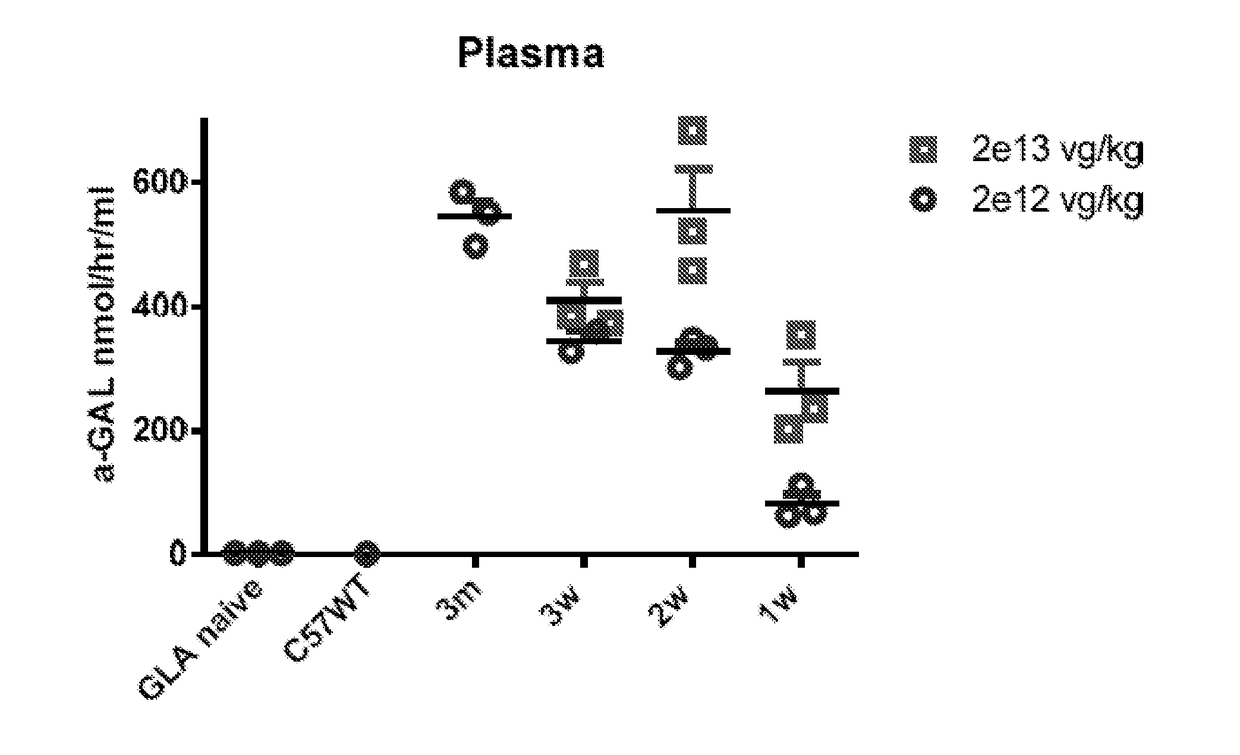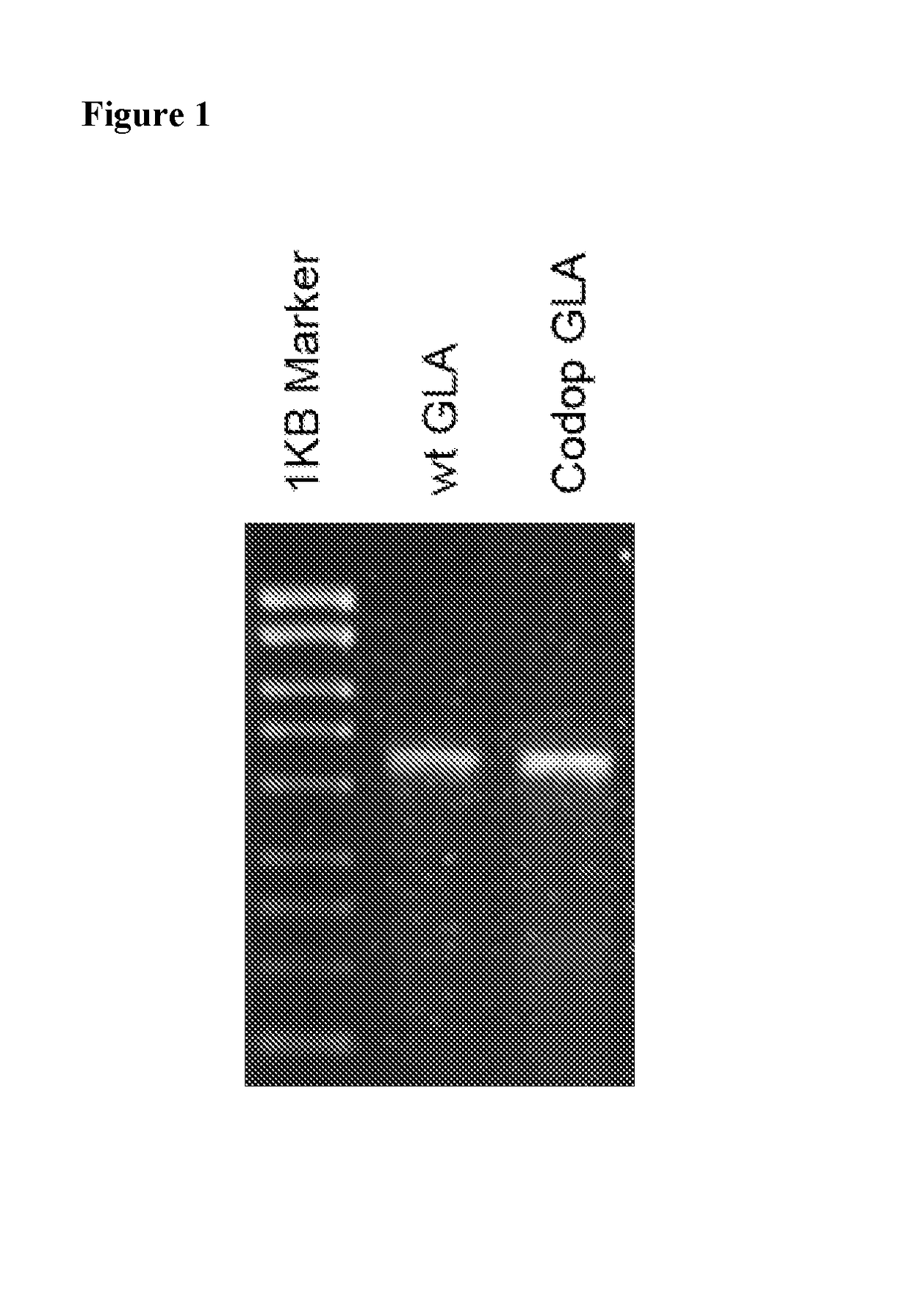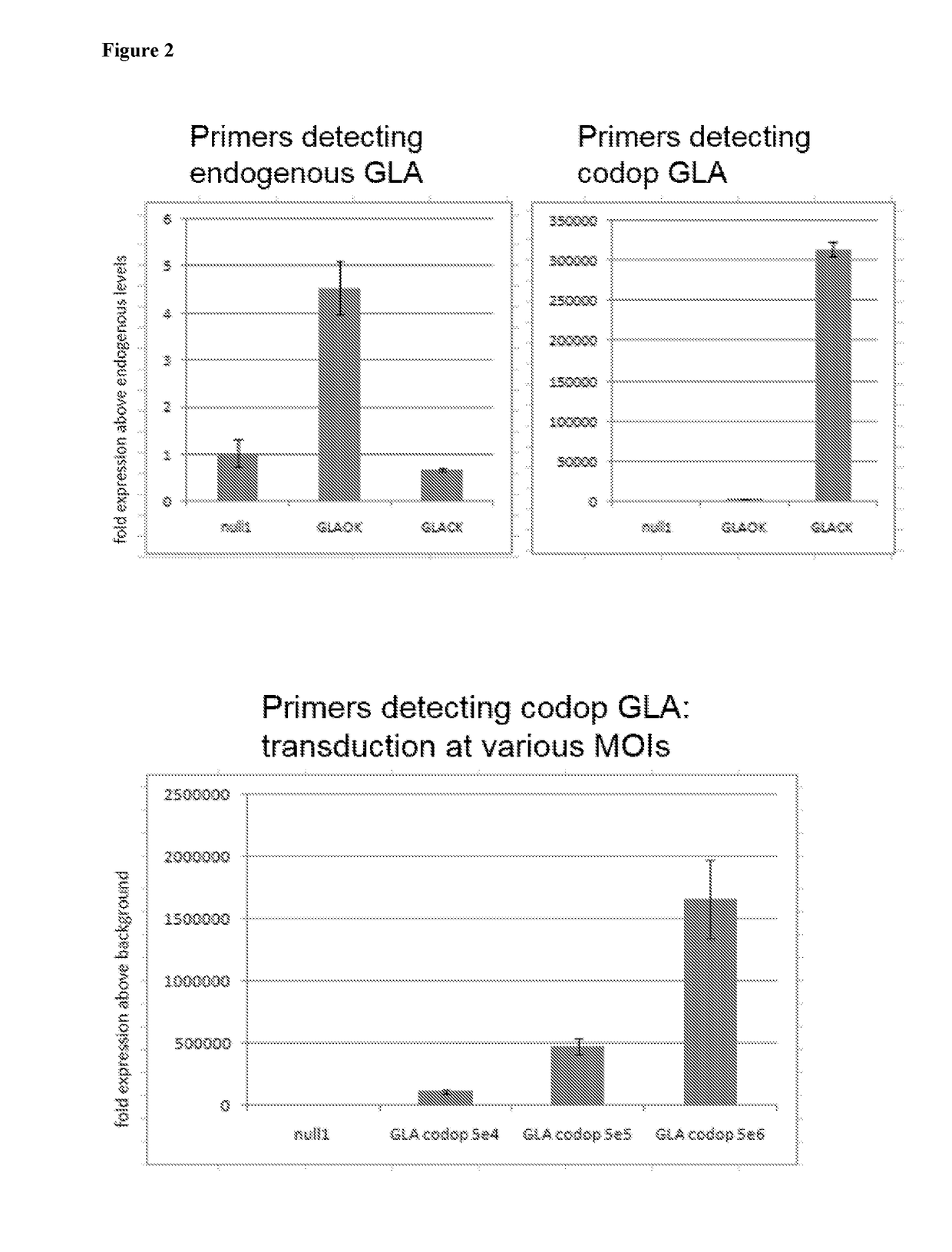Fabry disease gene therapy
- Summary
- Abstract
- Description
- Claims
- Application Information
AI Technical Summary
Benefits of technology
Problems solved by technology
Method used
Image
Examples
Embodiment Construction
[0067]The invention will now be described in detail by way of example only with reference to the figures in which:
[0068]FIG. 1 shows an alkaline gel analysis illustrating that scAAV8 vectors expressing wildtype (wt) α-galactosidase A (left lane beside ladder) and codon optimised (codop) α-galactosidase A (right lane) are both fully packaged, with no detectable partial genomes. These vectors were pseudotyped with serotype 8 capsid in which the wt or codon optimised α-galactosidase A gene was under the control of a liver specific HLP promoter.
[0069]FIG. 2 illustrates that a scAAV vector comprising codon optimised α-galactosidase A (scAAV-GLA-codop), when transduced into HUH7 liver carcinoma cells at a Multiplicity of Infection (MOI) of 1×107 vg / cell, does not affect endogenous levels of α-galactosidase A transcript (top left panel) but expresses high levels of codon-optimised α-galactosidase A mRNA (top right panel). scAAV-GLA-codop was transduced into HUH7 cells at increasing MOIs, l...
PUM
| Property | Measurement | Unit |
|---|---|---|
| Fraction | aaaaa | aaaaa |
| Fraction | aaaaa | aaaaa |
| Fraction | aaaaa | aaaaa |
Abstract
Description
Claims
Application Information
 Login to View More
Login to View More - R&D
- Intellectual Property
- Life Sciences
- Materials
- Tech Scout
- Unparalleled Data Quality
- Higher Quality Content
- 60% Fewer Hallucinations
Browse by: Latest US Patents, China's latest patents, Technical Efficacy Thesaurus, Application Domain, Technology Topic, Popular Technical Reports.
© 2025 PatSnap. All rights reserved.Legal|Privacy policy|Modern Slavery Act Transparency Statement|Sitemap|About US| Contact US: help@patsnap.com



